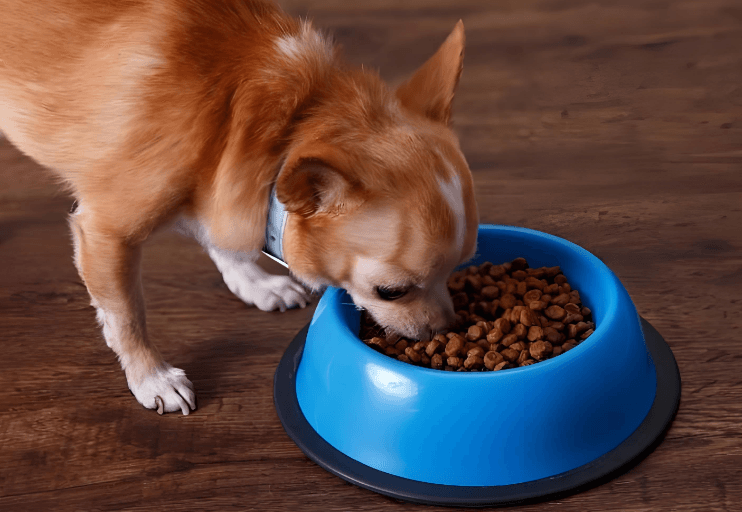
Chicken By-Product in Dog Food: Vet-Approved Safety Guide & Top 5 Alternatives
Hey dog parents! 🐾 Ever squinted at your pup’s food label and wondered, “What even IS chicken by-product? Should I freak out?” Let’s cut through the jargon and break down what’s safe, what’s sketchy, and how to pick better options—no PhD in pet nutrition required!
What’s Chicken By-Product? (Spoiler: It’s Not What You Think!)
Think of chicken by-products as the “leftovers” after human-grade cuts are taken. We’re talking organs (liver, kidneys), necks, feet, and even cleaned intestines. Sounds weird, right? But here’s the kicker: these parts pack nutrients dogs love! Liver? Loaded with vitamin A. Bone meal? Calcium for strong teeth. But (and it’s a big BUT), quality matters. Some brands use low-grade by-products like feathers or poorly cleaned guts. Yikes.

Is It Safe? Here’s What Vets Say
✅ The Good News: High-quality by-products are vet-approved! They’re rich in protein, vitamins, and minerals. For example, chicken liver gives your pup a natural iron boost, while cartilage supports joint health.
🚩 The Catch: Cheap brands might use “feed-grade” by-products—think mystery sludge with feathers or unsanitized guts. Always check if the label specifies “pet food grade” or names organs clearly (like “chicken liver”).
Red Flags to Watch For:
• “Animal by-products” (too vague!)
• No mention of sourcing (where’s the chicken from?)
• Brands dodging questions about quality testing
Top 5 Healthier Alternatives to Chicken By-Products
If your pup has allergies or you’re just not vibing with by-products, try these vet-backed swaps:
1. Whole Meat Meals (Chicken Meal, Salmon Meal)
• Why Better?: Made from dehydrated, cooked meat—no mystery parts! Salmon meal adds omega-3s for shiny coats.
• Pro Tip: Look for labels like “deboned chicken” or “whole herring.”
2. Single-Protein Formulas (Duck, Turkey)
• Perfect For: Dogs with chicken allergies. Duck is lean and easy to digest—great for sensitive tummies.
3. Plant-Based Proteins (Pea Protein, Lentils)
• Surprise!: Dogs can thrive on plants too! Lentils offer fiber + protein. Just ensure the food meets AAFCO standards.
4. Human-Grade Fresh Food
• Splurge-Worthy: Companies like The Farmer’s Dog use USDA-approved meats and veggies. No by-products, ever.
5. Air-Dried or Freeze-Dried Raw
• Closest to Nature: Retains nutrients without risky raw bacteria. Brands like Ziwi Peak use 96% meat/organs.
3 Questions to Ask Before Buying
- “Does the brand disclose their by-product sources?” (If not, swipe left.)
- “Is there a vet nutritionist on their team?” (Red flags if they can’t answer!)
- “Can I see an independent lab test?” (Transparency = trust.)

When to Avoid By-Products Completely
• Puppies & Seniors: Their immune systems are more fragile. Opt for whole meats or vet-prescribed diets.
• Dogs with Allergies: Chicken is a common allergen—switch to novel proteins like kangaroo or venison.
• Ethical Concerns: If sustainability matters, seek brands using “upcycled” organs (no waste, all nutrition!).
Final Takeaway: Chicken by-products aren’t evil—they’re just misunderstood. High-quality versions can be nutritious, but if your gut says “nope,” there are plenty of alternatives. Always prioritize brands that scream transparency and quality. Your pup’s wagging tail (and shiny coat) will thank you! 🌟
American Dingo animal behavior Budget Tips canine behavior Canine Care Canine Health DIY pet projects dog behavior Dog Breeds dog care Dog Care Tips dog exercise Dog Food Dog Grooming dog health Dog Measurement dog nutrition dog ownership dog potty area Dog Training Dog Wound Care Family Pets Hunting Dogs lipomas in dogs newborn puppy care obedience training outdoor pet care Pet Care Pet Care Tips Pet Health Pet Loss Pet Safety pet tips pet training Positive Reinforcement Potty Training Puppy Care puppy health Puppy Training Rabies in Dogs Temperature Monitoring Training Tips veterinary advice Veterinary Care Veterinary Tips
Sorry. No data so far.
Leave a Reply
You must be logged in to post a comment.